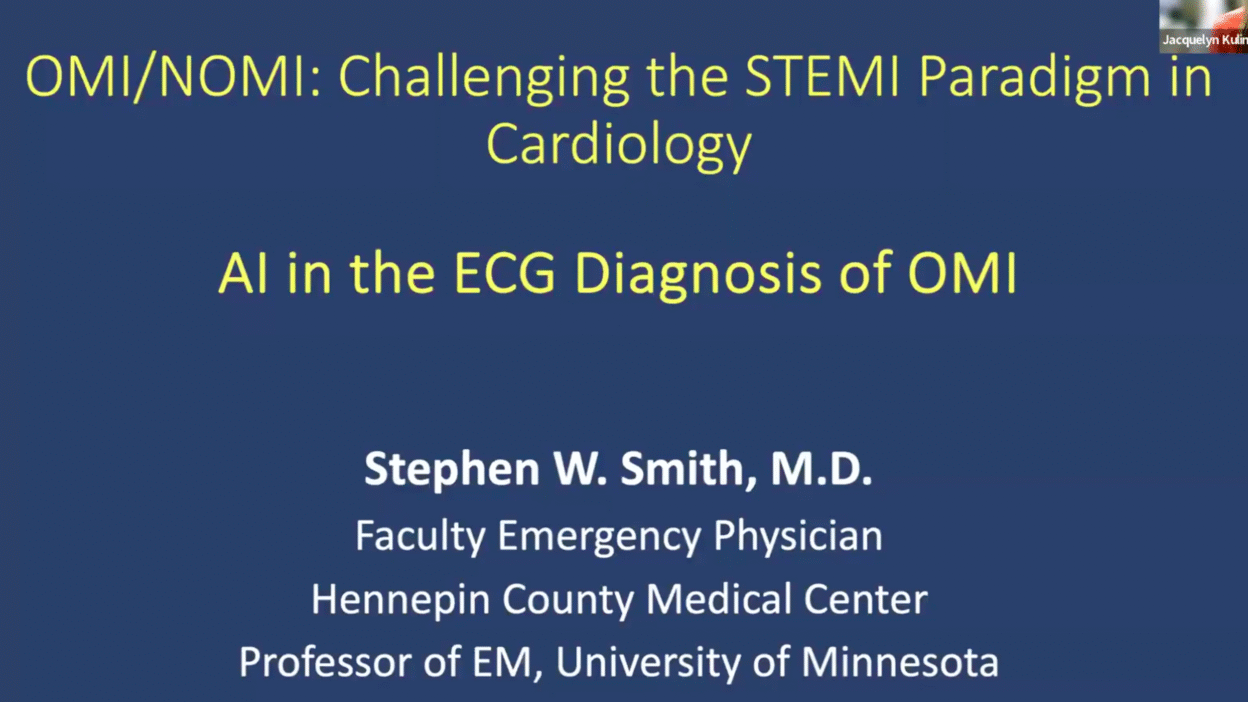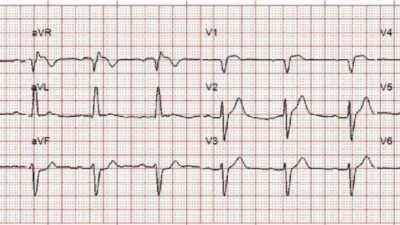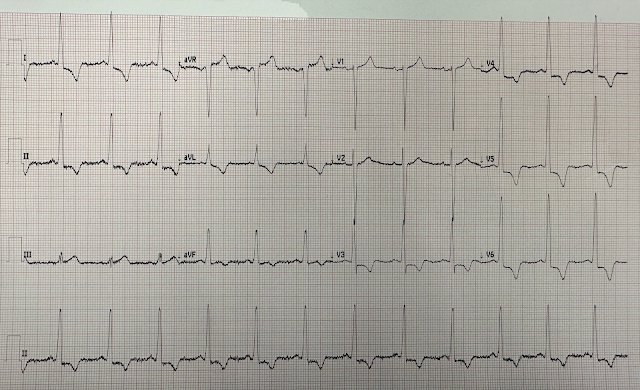This is from Cardiology Grand Rounds at Medical College of Wisconsin, via Zoom, on October 23, 2025.
The woman you see there is Dr. Jacquelyn Kulinski, of the Dept. of Cardiology at MCW, who gave a very gracious introduction.
= = =
Click here to view the talk on OMI NOMI and AI
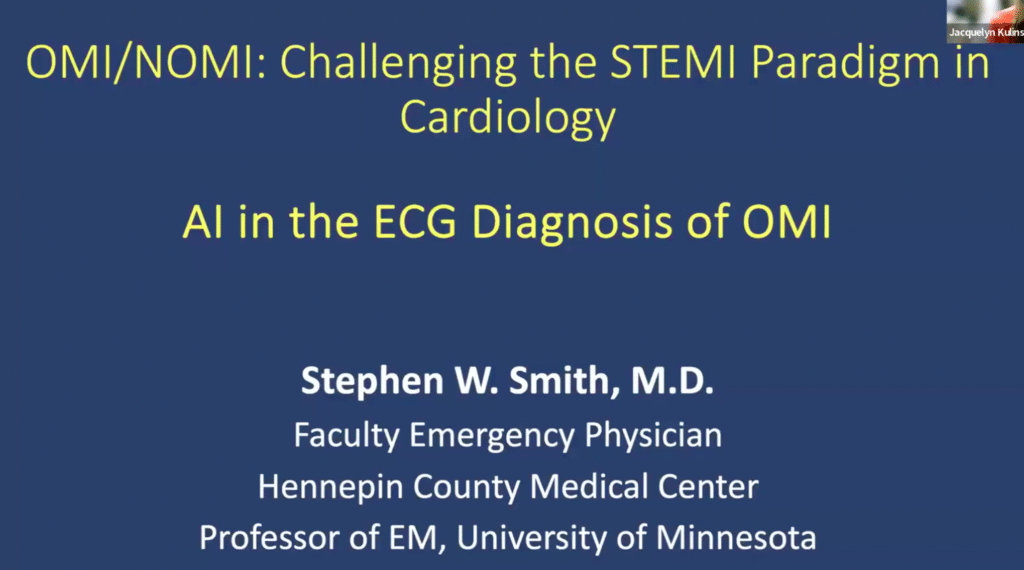
= = =
NOTE: You can find this lecture (as well as other lectures) at any time — at the above link in our Top Menu
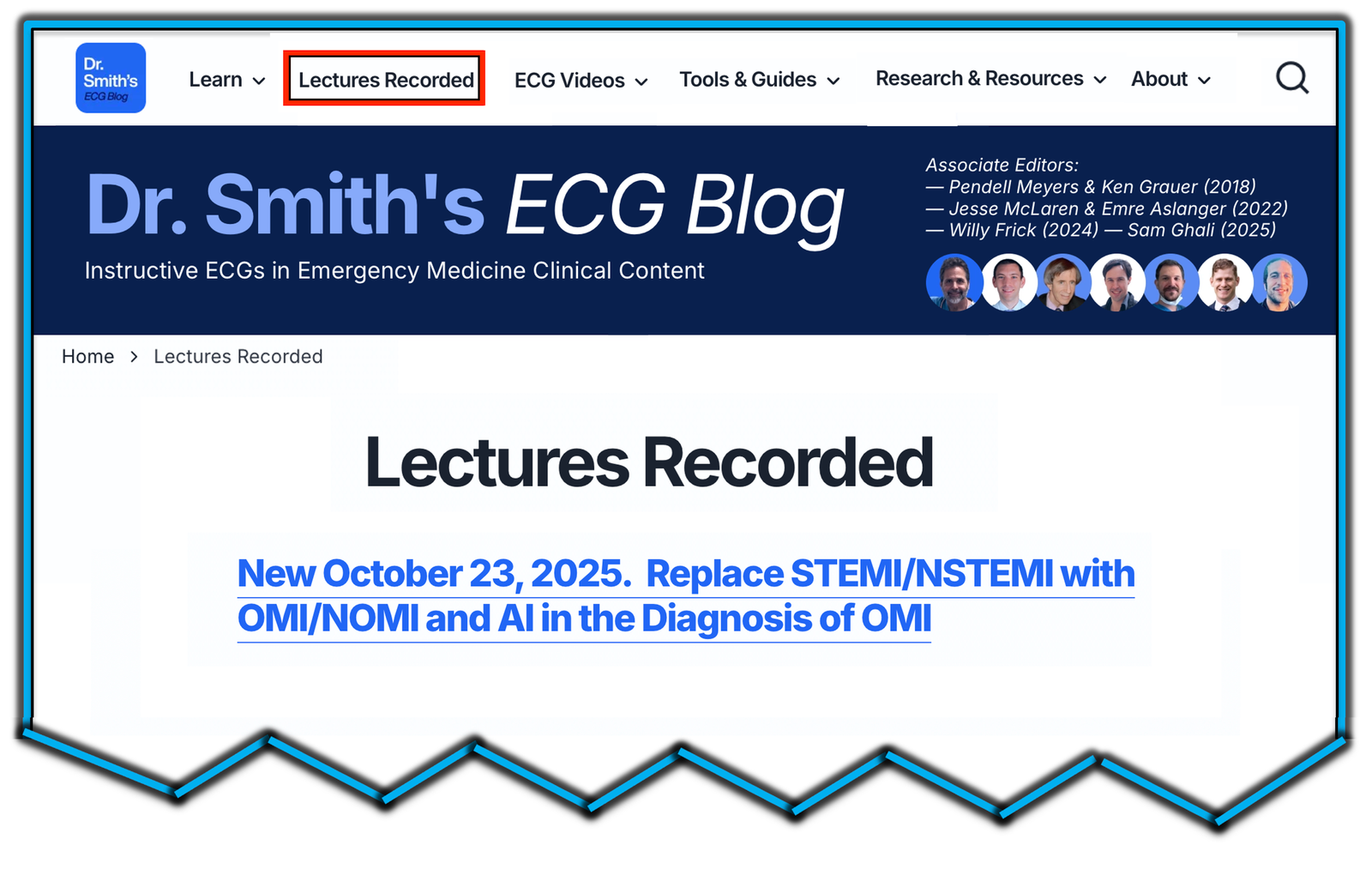
= = =
======================================
MY Comment, by KEN GRAUER, MD (10/25/2025):
My Recommendation: For anyone who has recently participated in the decision to delay cardiac catheterization “because STEMI criteria are not satisfied” — the above Cardiology Grand Rounds talk by Dr. Smith is essential viewing.
- Dr. Smith’s talk begins with the question that is posed below in Figure-1: What do these 2 ECGs have in common?
- If you are among those who think the obvious STEMI in the TOP tracing in Figure-1 could not possibly have anything in common with the subtle findings in the BOTTOM tracing — then Dr. Smith’s talk is essential viewing — because cardiac cath on both of these patients showed virtually identical findings — and — in a patient with new chest pain, the need for prompt cath should be quickly recognized for both of these tracings as soon as you see each ECG.
= = =
As made abundantly clear from Dr. Smith’s talk — the need for replacing the outdated STEMI Paradigm with the OMI Paradigm has never been more convincing.
- Facilitating transition to the OMI Paradigm — is the Queen of Hearts AI intepretation program — that instantly increases your ability to recognize acute coronary occlusion (and greatly reduce the number of false positive cath lab activations).
= = =
Figure-1: Comparison tracings at the beginning of Dr. Smith Lecture.
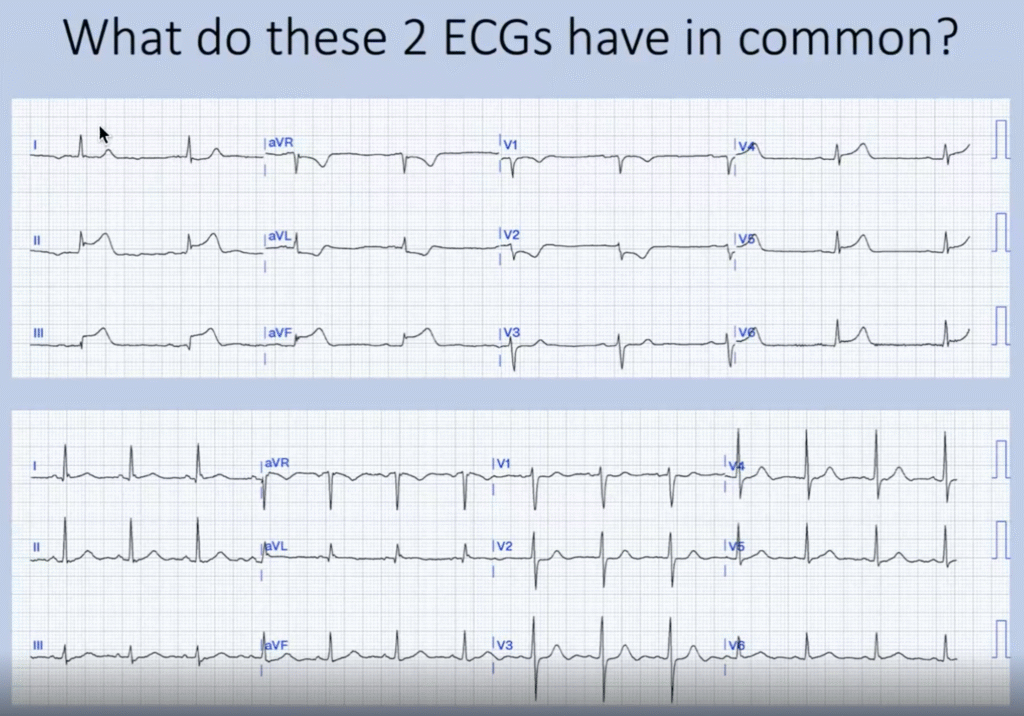
= = =
= = =

